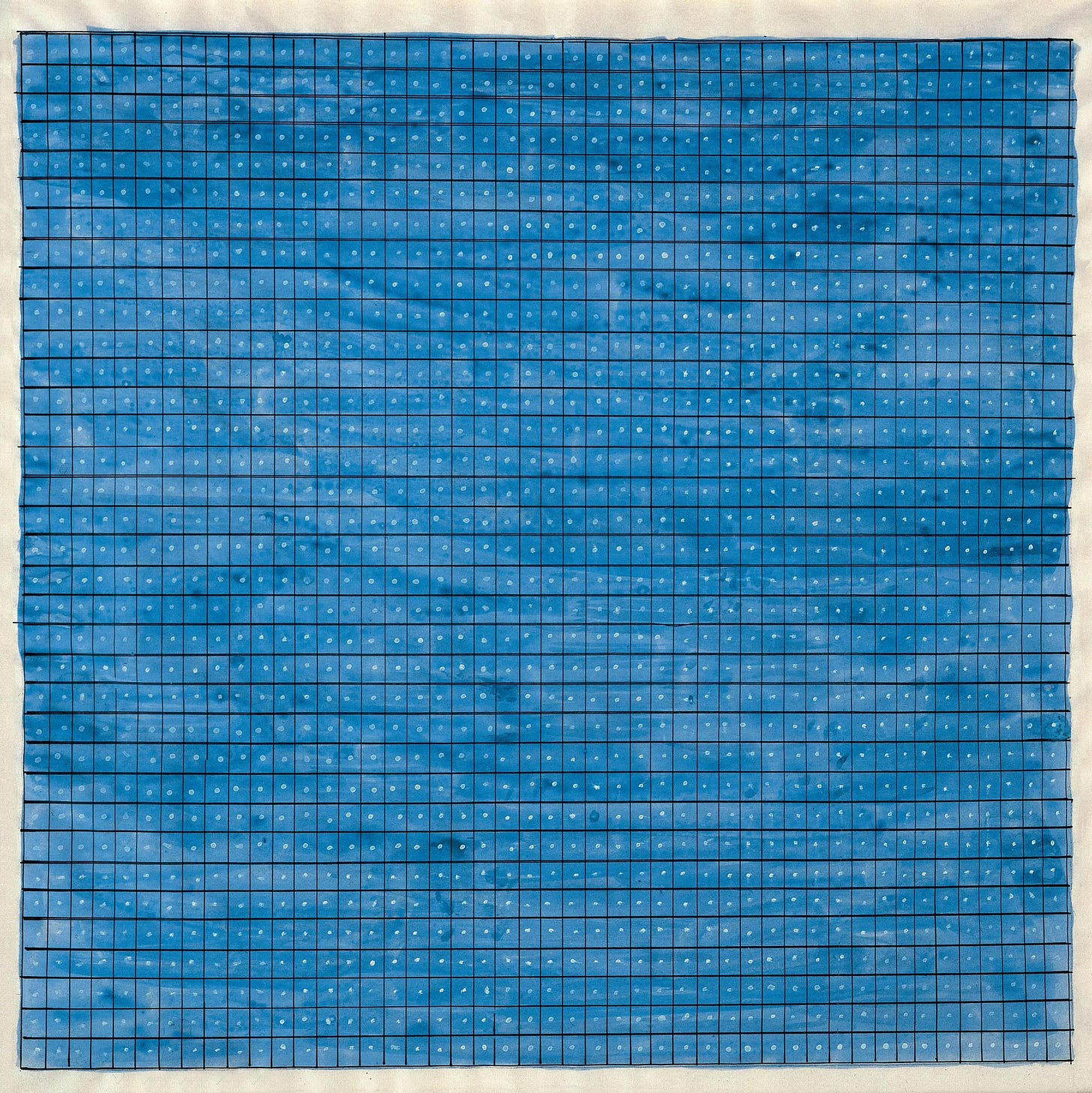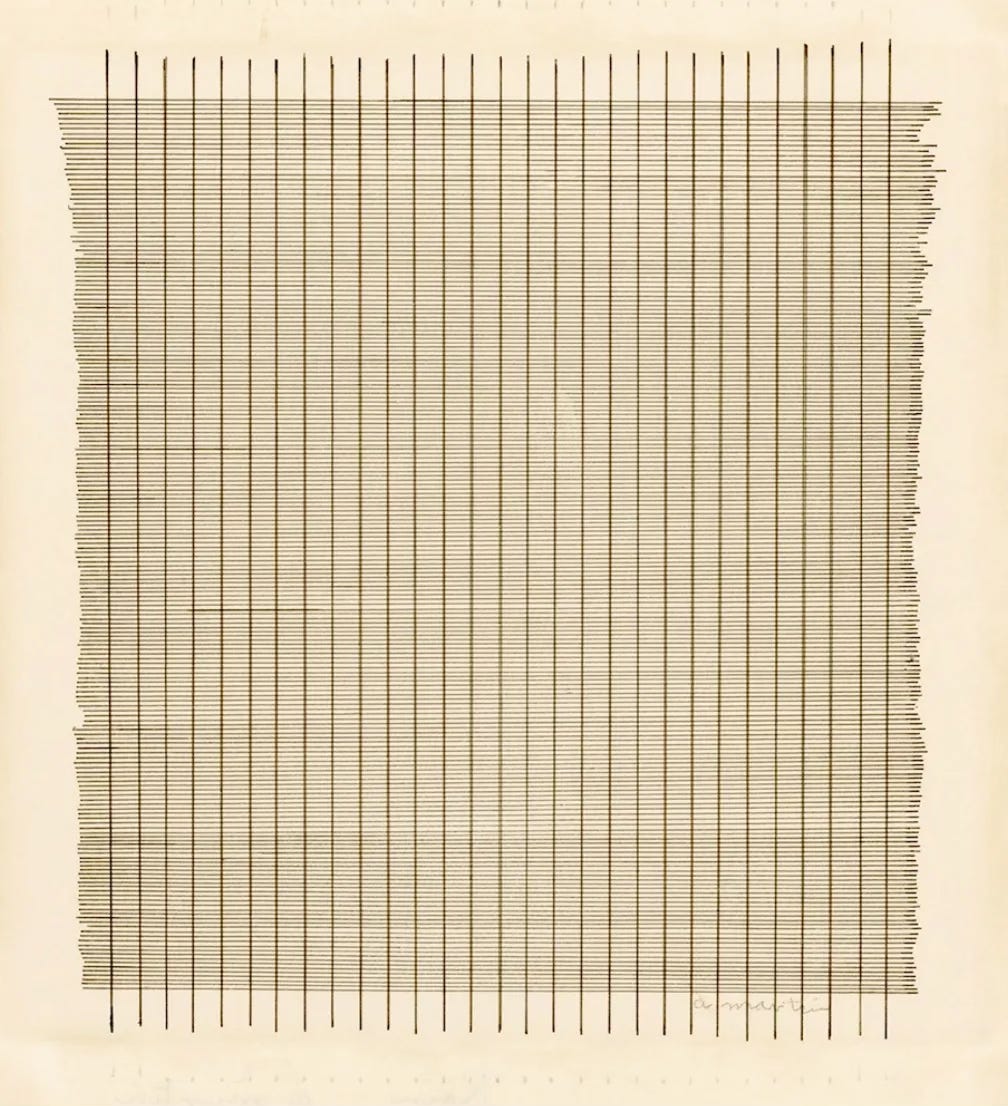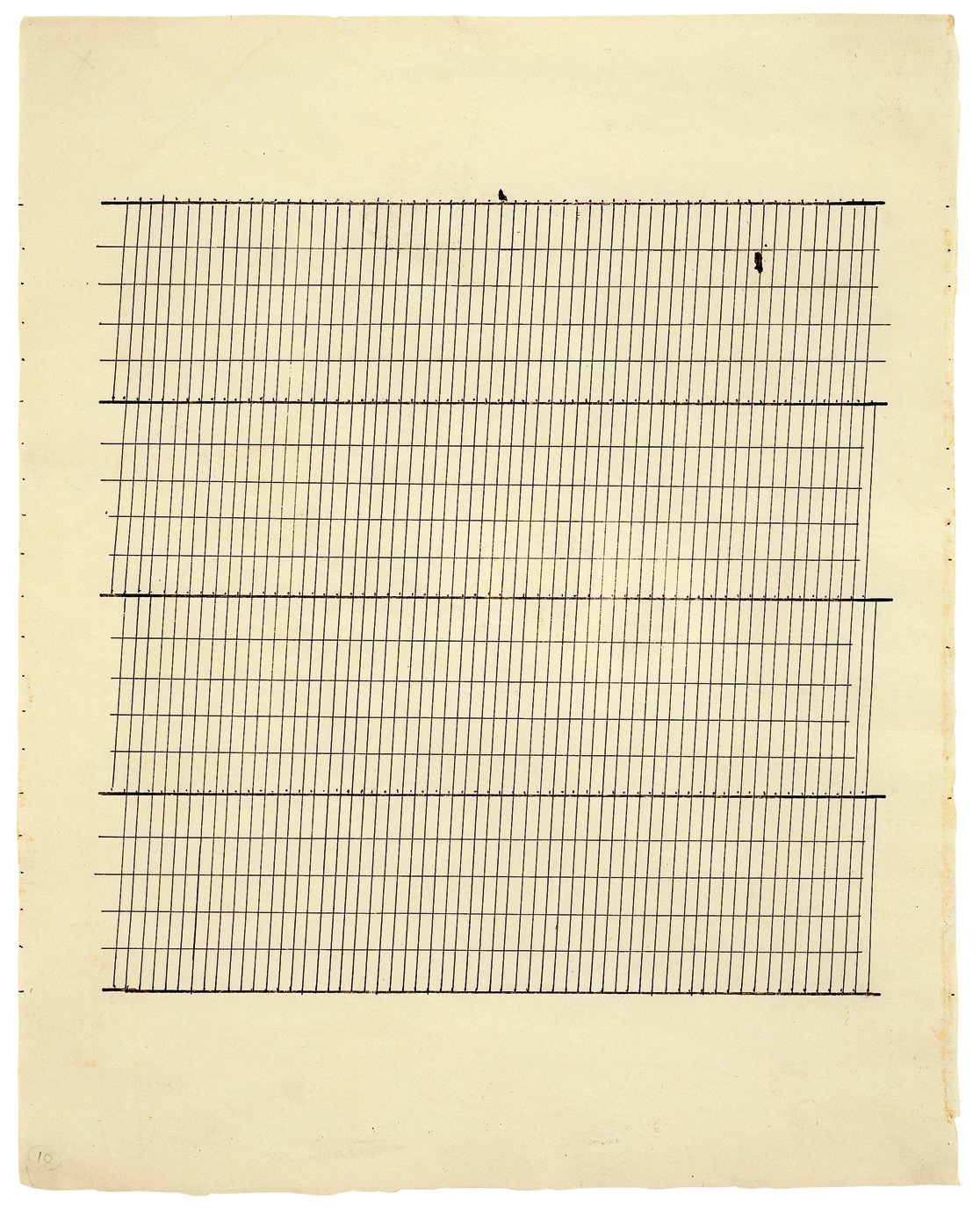Day 5. Let's Get Griddy
Today's 10 minutes is all about the quiet straight lines
Hellooooo GUT peeps!
It’s Day 5 of the 30-Day Drawing Habit! If you haven’t started yet and want to jump in, it’s never too late. You can enter now or start at the beginning. Wherever you are, you’re right where you’re supposed to be.
Check out the FAQ for more deets. And if you haven’t introduced yourself to the group you can do that in the Introductions. So many fascinating people here from all around the world!
After today, we only have one more doodle to do, and then we switch to a very different kind of drawing, so good on you for doodling your doodles with such effort.
**Applause **
Now let’s get to today’s 10 minutes.
Remember how that loopy-line drawing artist we learned about a couple days ago, Hundertwasswer, said, “The straight line is godless and immoral”?? Well, the person we’re learning about today would totally disagree. Today we take our inspiration from someone whose drawing and painting practice was in many ways the opposite of Hundertwasser, though she also focused on nature and beauty. (So cool how artists explore similar themes in radically differently ways.) Today, we’re diving into one of my personal faves…
Agnes Martin
“There’s not such thing as a perfect painting.” - Agnes Martin
If you listened to John Green’s podcast on Hiroyuki Doi’s circle drawings yesterday, you’re primed and ready to doodle. The other artist he discussed in that episode was the abstract painter Agnes Martin.
Those of you who joined the 30-Days this past Summer will remember Agnes. For those who didn’t, you may still recognize her minimal, quiet yet striking paintings. Agnes created so much beauty and depth of feeling with simple lines and grids on canvas. When you see these large paintings in person, you appreciate the expansive FEELINGS they contain. Hopefully you can get a little sense of that here:
And here:
And here!
How does someone create something like this?? Agnes would sit in a chair for hours until an image would appear in her mind. She’s draw a little postage stamp sized sketch on paper, and then spend days/weeks/months translating the image to canvas. She’s use tape, pencil, a ruler, and sometimes paint to create these careful lines and humming grids you see above.
“When I first made a grid I happened to be thinking of the innocence of trees and then this grid came into my mind and I thought it represented innocence, and I still do, and so I painted it and then I was satisfied. I thought, this is my vision.” - Agnes Martin
When you sit with these paintings for a while you can really get lost in the feelings they contain. I like to imagine they are similar to the feelings Agnes experienced while creating them. To wit of our art-as-a-way-to-process-feelings discussion from yesterday: like Hiroyuki Doi and Yayoi Kusama, Agnes experienced some psychological challenges in her life, and her artwork may have been a way to help process them.
Quick context: Agnes (1912-2004) was born in 1912 on a farm near Vancouver. Her father died when she was two, and she and her four siblings were raised by a reportedly quite tough mother. Agnes didn't take art lessons when she was growing up, but she learned all about knitting and hooking rugs from the women in her family. Before becoming an artist, Agnes was a cherry picker, a wheat harvester, and even an ice cream scooper. She was a heck of a swimmer and got an athletic scholarship to University of Southern California, then went on get a teaching degree. It wasn’t until she was 30 that she decided to become an artist.
Her art career started and took off in New York, and she found herself in the epicenter of the art movement of the time. But Agnes was more of a loner than her peers, and was more interested in making art than becoming famous for it. After she experienced a psychotic break while living in New York, she was diagnosed with schizophrenia and was hospitalized for treatment. Not long after, she moved to New Mexico where she lived simply and focused on drawing and painting. Making art was all she wanted to do. And that's exactly what she did until she passed away, leaving behind so many beautiful grid paintings, all filled with feeling.
“When I first made a grid, I happened to be thinking of the innocence of trees and then this grid came into my mind and I thought it represented innocence, and I still do, and so I painted it and then I was satisfied. I thought, this is my vision.”
As you in the GUT know, I’m very interested in how making art helps people (me, you, all of us!) cope with the emotional and psychological challenges we experience throughout our life. Interestingly, Agnes stated that her artwork was not directly connected to her mental illness. Others (not Agnes) have asserted that her quiet, methodical drawing and painting practice might have helped settle her mind. Personally, I believe people are the best experts on themselves, so I’ll trust Agnes. And also. In my personal experience, I know drawing in a slow, deliberate, quiet style like Agnes did sure settles MY mind. (How about you?)
Regardless, I find Agnes’ artwork calming, beautiful, and filled with feeling.
“These paintings are pure emotion…” - Agnes Martin
If you’d like to dive a little deeper, here is a video that contains a bit more about Agnes and some interviews with her.
Okay, now let’s get on with DAY 5. Get your 10 minute timer ready.
Today’s drawing prompt is…









